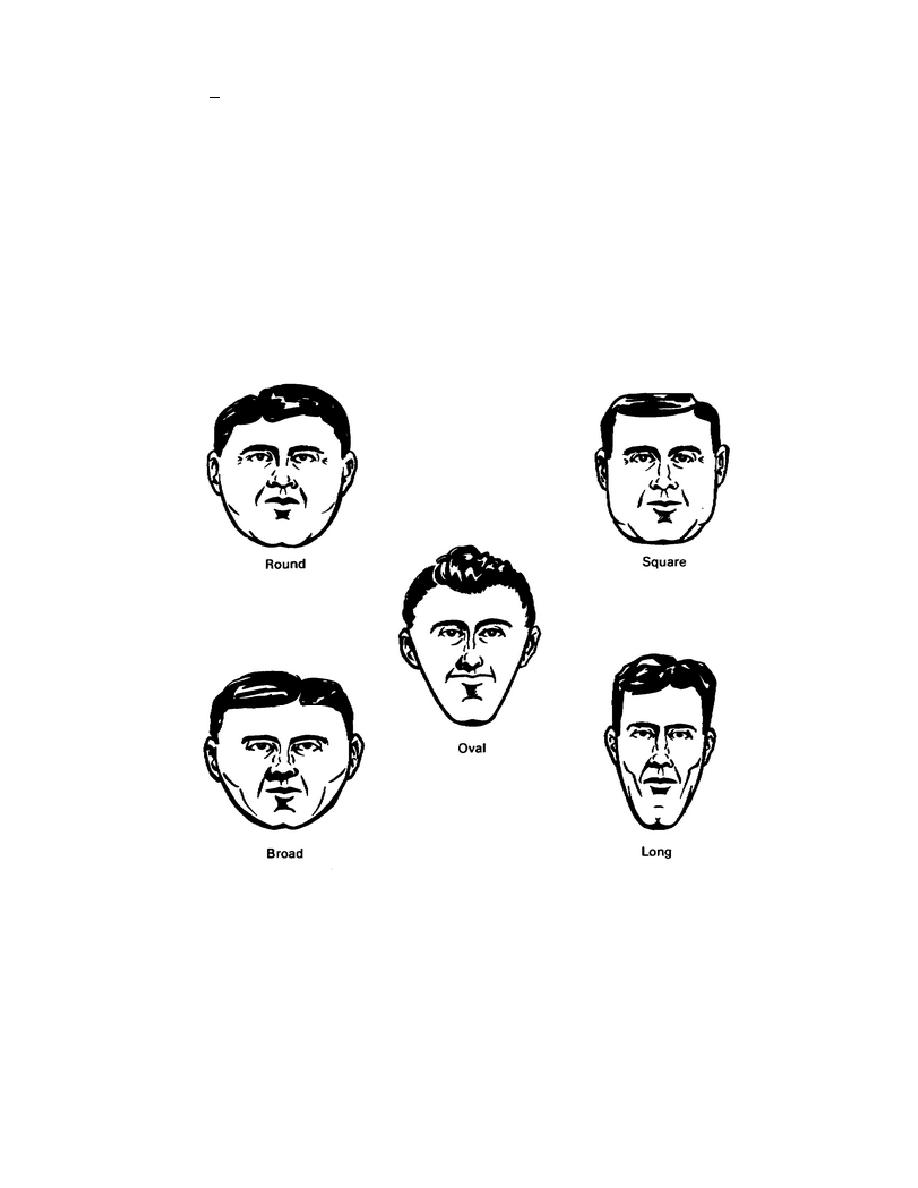
4. Hair. Color as blond (light or dark), brown (light or dark), red
(light or dark), auburn, black, gray, streaked with gray, or white; in the case of
bleached, tinted, or dyed hair, both the artificial and the natural color should be
stated when possible. Density as thick, medium, thin, or sparse. Hairline as low,
medium, receding, or receding over temples.
Baldness should be described as
complete, whole top of head, occipital (back), frontal, receding, or a combination
of types (Figure 5-7).
Hair types as straight, wavy, curly, or kinky.
Hair
texture as fine, medium, or coarse.
Appearance as neat, bushy, unkept, oily, or
dry. Hair styles as long, medium or short; parted on left, parted on right, parted
in center, or not parted. Current terms of hairstyles which are readily and widely
understood should be used.
Wigs, toupees, and hairpieces should be described
carefully and in detail.
The careful observer can usually determine whether a
person is wearing a toupee or other hairpiece from such indications as differences
in hair texture, color, density, type, or appearance; furthermore, the arrangement
of false hair will often be too nearly perfect.
The edges of the hairpiece will
often be evidence upon close scrutiny.
Figure 5-6.
Shape of the Face.
MP1016
5-10



 Previous Page
Previous Page
